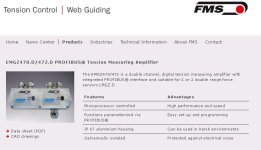Hi guy
I have been asked if we can connect a loadcell to a plc and control an output ,
What they won't to do in the ladder is to use the input value ( load cell) if that equals the setpoint then switch output,
Not to sure about the connections , I am using a micrologix 1200 not to sure what cards I will need , and help would be great thanks stu
I have been asked if we can connect a loadcell to a plc and control an output ,
What they won't to do in the ladder is to use the input value ( load cell) if that equals the setpoint then switch output,
Not to sure about the connections , I am using a micrologix 1200 not to sure what cards I will need , and help would be great thanks stu








